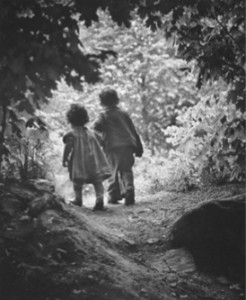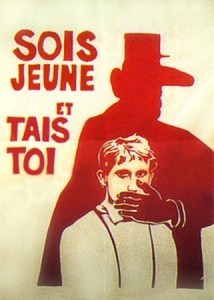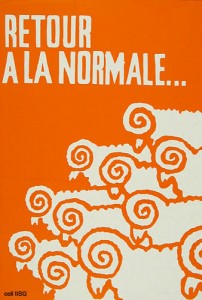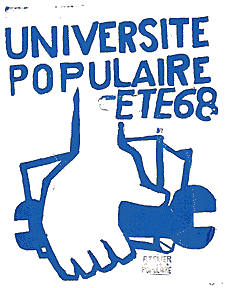Sunday
Opinion PiecesThe Family of Good Heart
In 1968, when I was 17 years old and coming into adult consciousness about the world, waking up to the need for progress in human societies, I visited New York to see an exhibit of “Paris, May 1968” poster work.
I spent my formative years – the latter half of the Sixties – in Palo Alto, California, witnessing the early hippie era (and collecting the psychedelic posters of rock concerts held in nearby San Francisco), as well as the free-speech, antiwar and anti-draft demonstrations that took place in the Bay Area.
There was an atmosphere of freshness, vitality and change to 1968. Not only in Paris – where in May, students, workers and labor unions united against and brought down the old government – or Czechoslovakia (“Prague Spring”) or Poland (“Marzec 1968”), but around the world. In South America, although Che Guevara had been assassinated by the Americans, his reform and revolution movement continued to grow.
In the United States, a poet-senator, Eugene McCarthy, was running for president on a peace platform, as was the younger brother of President Kennedy. Young people were excited and participating in politics, but in a politics of societal and cultural advancement. The Civil Rights Act had passed Congress, women were beginning to stand up for more rights, even homosexuals were threatening to leap out of their closets.
Calls for peace, the end of poverty and better automobile fuel efficiency were announced openly on television, on radio and in the print media. The film 2001: A Space Odyssey was released, and over in England the Beatles announced the formation of Apple Corps, which was going to spawn a new and friendlier variety of capitalism. The collective, rather than the hierarchical, was the new mode.
There was violence, too – by August 1968, “Prague Spring” was crushed by a Soviet invasion of 200,000 troops and 2,000 tanks. Dr. Martin Luther King and Senator Robert Kennedy were both assassinated; even Andy Warhol was shot, by a radical feminist. The war in Vietnam would continue for seven years more, ultimately ravaging that country for 18 years total.
It was that summer, on my visit to the Museum of Modern Art, that I discovered the photography of Edward Steichen. My love of history and biography was ignited by coming across The Family of Man, a book based on an earlier MOMA exhibit curated by Steichen.
In The Family of Man, Steichen presents portraits of people from all over the world, illustrating themes common to all cultures, such as love, children and death. This collection, along with the May 1968 street posters from Paris, galvanized in me something undefined but palpable, a feeling of being connected to many others. This seed within would develop gingerly, tentatively, flowering in the next decade when I first read Chogyam Trungpa’s book Shambhala: The Sacred Path of the Warrior.
Decades later, we find ourselves in another era of change – yes, change we can believe in, but also change beyond our control. Financial, social and bio-ecological systems are in collapse. Answers to questions of race, culture, language and relationships elude us. Methods and maps to security, well-being and connectedness are being redrawn, rediscovered.
Yet we do feel connected. The whole world – not just America – seeks a more perfect union, not merely social or economic integrity but a personal, intimate connection with the planet itself as an equal partner. We continue to learn, and to learn again and again, that what we share far outweighs what separates us.
These days, I find that my family has expanded beyond my geneaology of “Euro-American of French and Celt heritage.” Through my ex-partner, a man from Hong Kong who remains a dear friend, I am linked to Chinese in-laws and a village in Guangzhou. Through my husband Christopher’s African, Caribbean and Native American lineage, I have a new brother and sister, nieces and nephews, and ancestors on two continents. (And through Christopher’s ex, a man from Finland now partnered with a man from Brazil, we are linked again to yet more places and cultures.)
In the kingdom of Shambhala, we have family everywhere – on six, possibly seven continents, in most major cities, smaller towns and even minor hamlets. Our humanity, our good heart, bind us together. For me, all of this is my family – husband, community and planet.




















